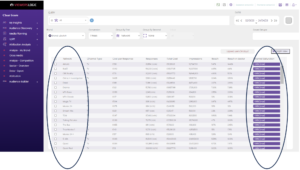Why using data from response window (5-10 minutes) attribution models will harm your media plan?
Author: Shano Ahmad
Published: 4th August 2023
Quick Summary:
- Many companies use 5-10 minute attribution models, such as TVSquared, Adalyser and Group M’s Spot-lift, for their media planning.
- In our Single Source Data, we can easily identify media plans that are based on these models. These plans over-invest in high frequency-zero rated channels at the expense of channels such as ITV and Sky1.
- This typically leads to lower reach, a very high frequency of spots for a very small segment of the target audience and a much lower long-term / brand-building effect.
- The reason for this is that these models capture a negligible amount of actual response together with a lot of ‘noise’ and therefore lead to incorrect media planning decisions.
- To summarise: media plans that are based on 5-minutes attribution models are sub-optimal, have a lot of wastage and have very little long-term effect compared to plans that are based on good data.
In past blog posts we showed why the 5-minute attribution models are not fit for purpose as they are for the most part based on less than 1% of response data. In this post, we want to show how this misleading data leads to bad media planning and how we can easily identify in our data which companies are using these models for their media planning.
One of the problems of the 5-min attribution models is the over-attribution of low-rated, high-frequency channels – because of the nature of these models, where random noise fluctuations in response patterns can be misattributed as a signal, they always show that the low-rated channels drive most of the traffic, just because there are many ads aired on these channels. Additionally, these models tend to penalise engaging content – if the viewer is engaged in the programme, he or she is watching they are less likely to take time to visit a website immediately after seeing an ad.
Bigger stations will typically have more popular and engaging content and suffer as a result.
Before we continue, we need to understand what channel saturation is – This is the per cent of the target audience that watches a specific TV channel and saw at least one of your ads during the campaign period. High channel saturation means you hit the same users repeatedly while low saturation means that you can increase your budget in the channel and reach new people who haven’t seen your ad.
When we look at the media performance of plans that were based on the 5-min attribution model, we see that their media plans over-saturate the small stations and many of them have a saturation greater than 90% – e.g. more than 90% of the target audience who watch this channel were exposed to the campaign. In general, if the saturation is higher than 75%-80% it means that the brand is just wasting money and hitting the same people over and over again. Conversely, many of the big channels like ITV, Sky1 and Channel 5 have very low saturation in these plans and could benefit from a budget increase.
For example, when we look at the Uswitch campaign between 2/1/23-24/4/23 we can easily see that they used the 5- minutes attribution model for their planning as all the following channels have a saturation of above 90% – 4Music, Blaze, CBS reality, Crime + Investigation, DMAX, MTV base, MTV Classic, Magic TV, Music 24, Smash hits, TCM, Talking Pictures, The box, True movies 1, Quest, Quest red.
This type of media plan includes a lot of wastage and has a lower reach and a lower longer-term effect. It will be advisable for brands to re-distribute their budget and base their planning on other tools.
When we see this picture, we immediately know that they are planning based on 5-minute attribution data:
